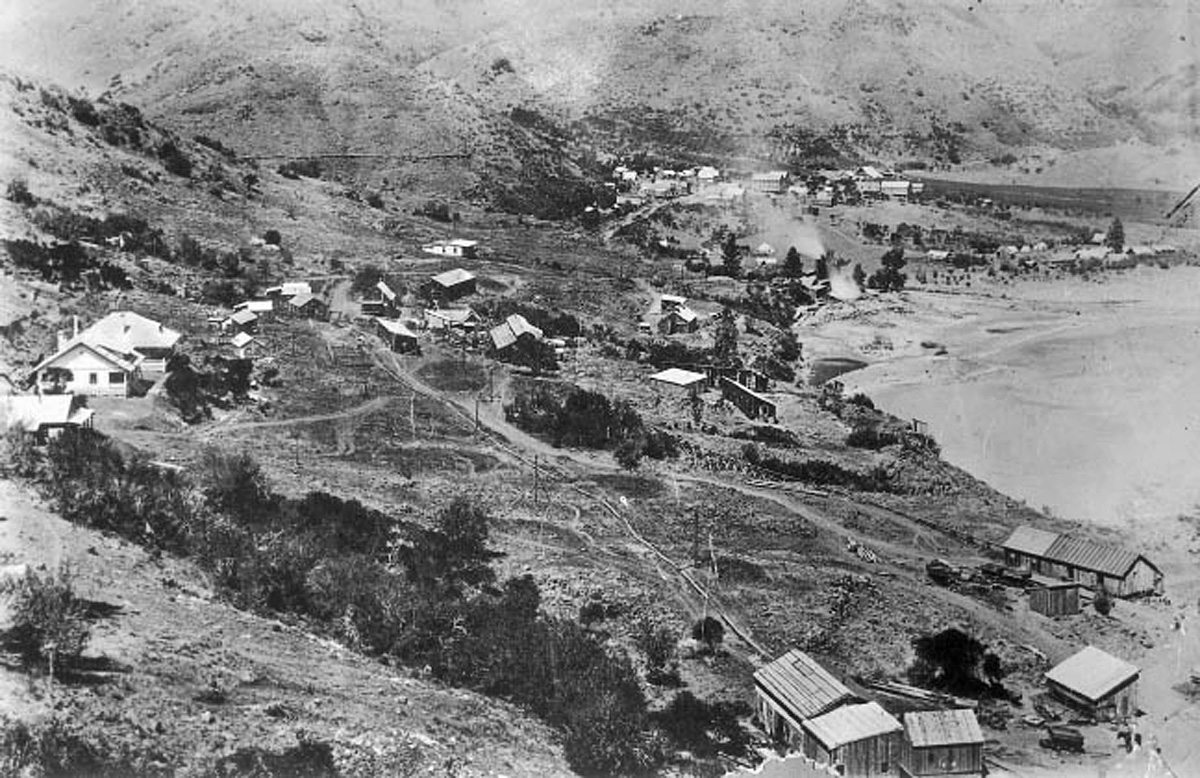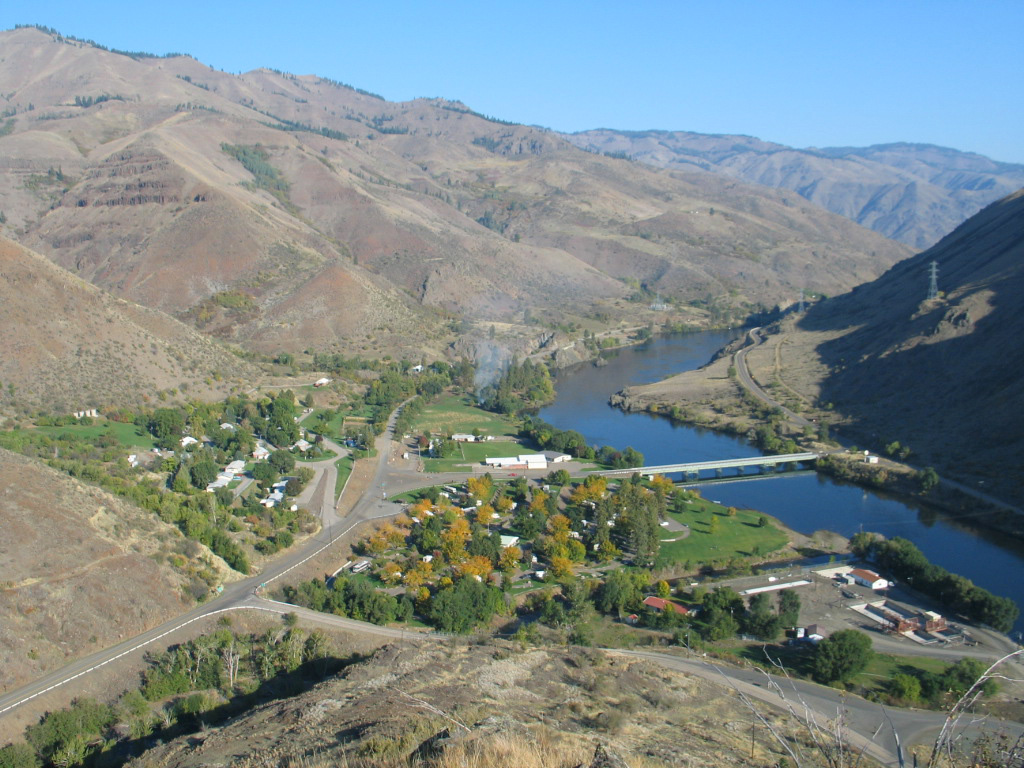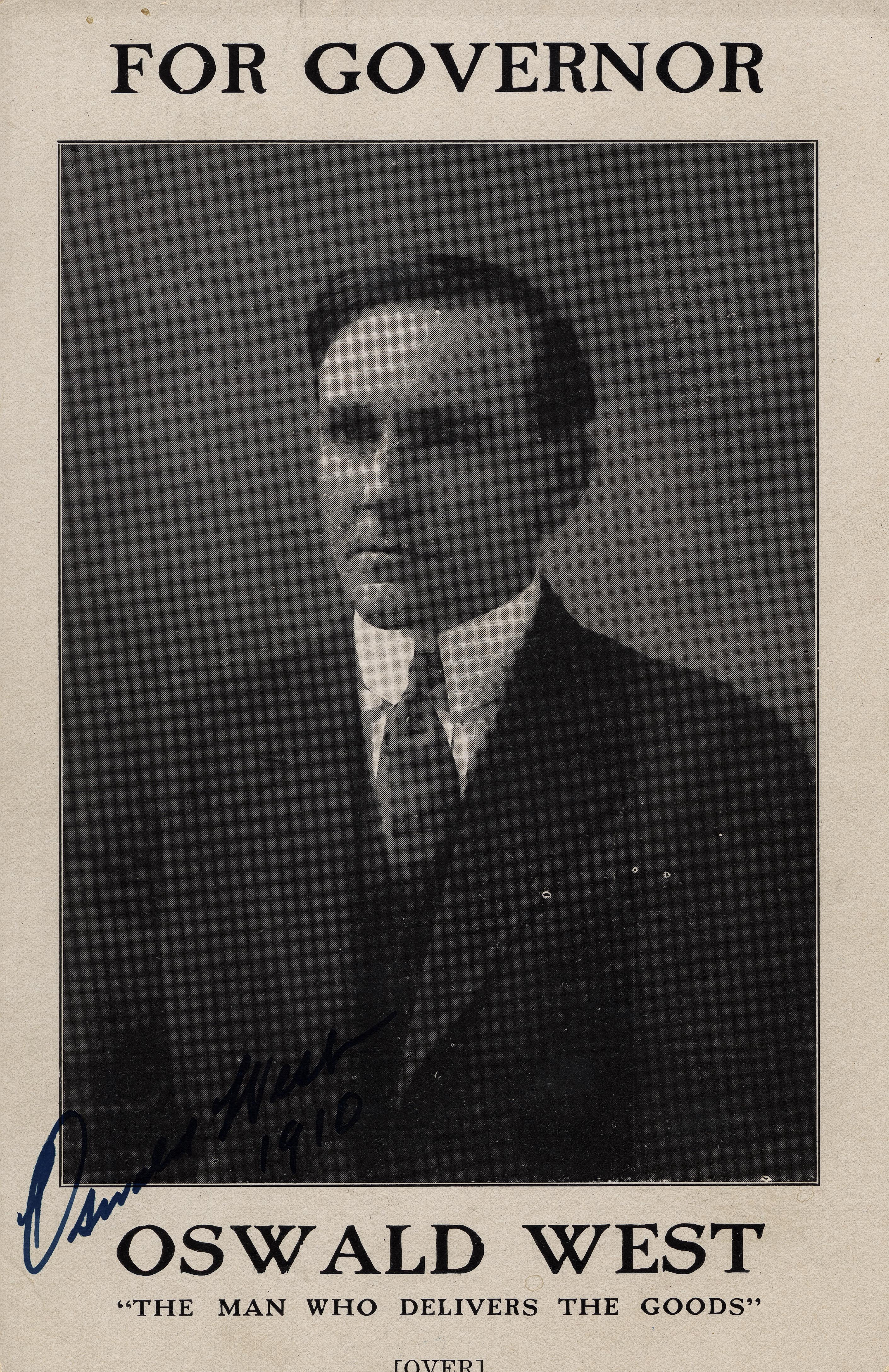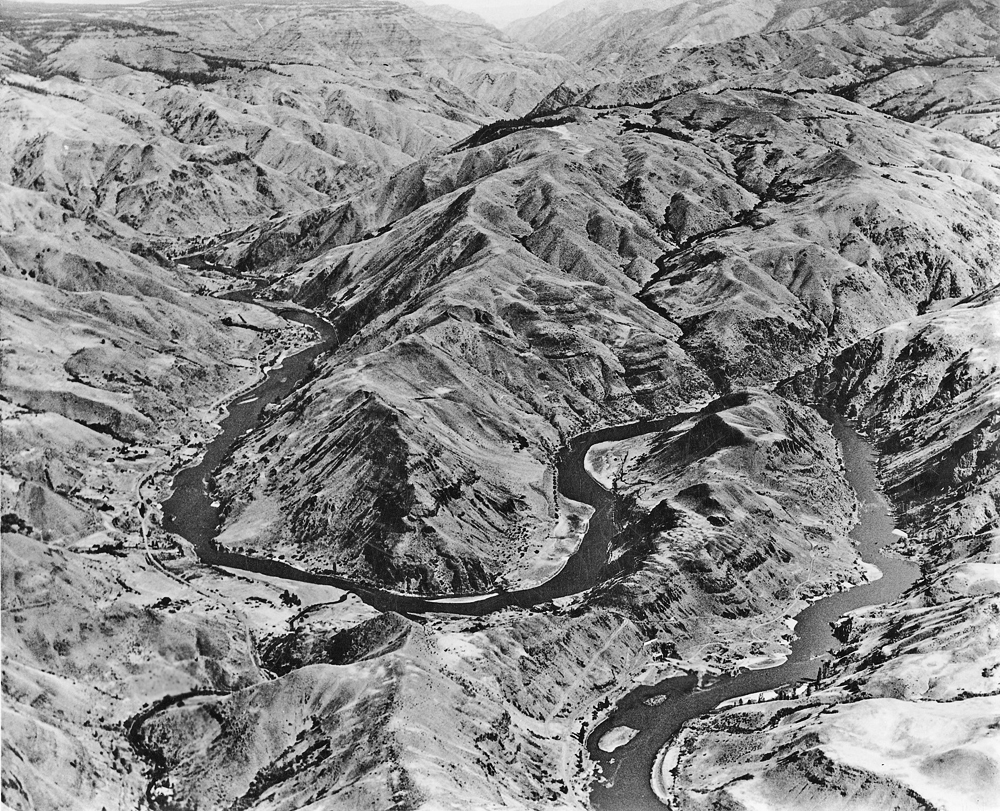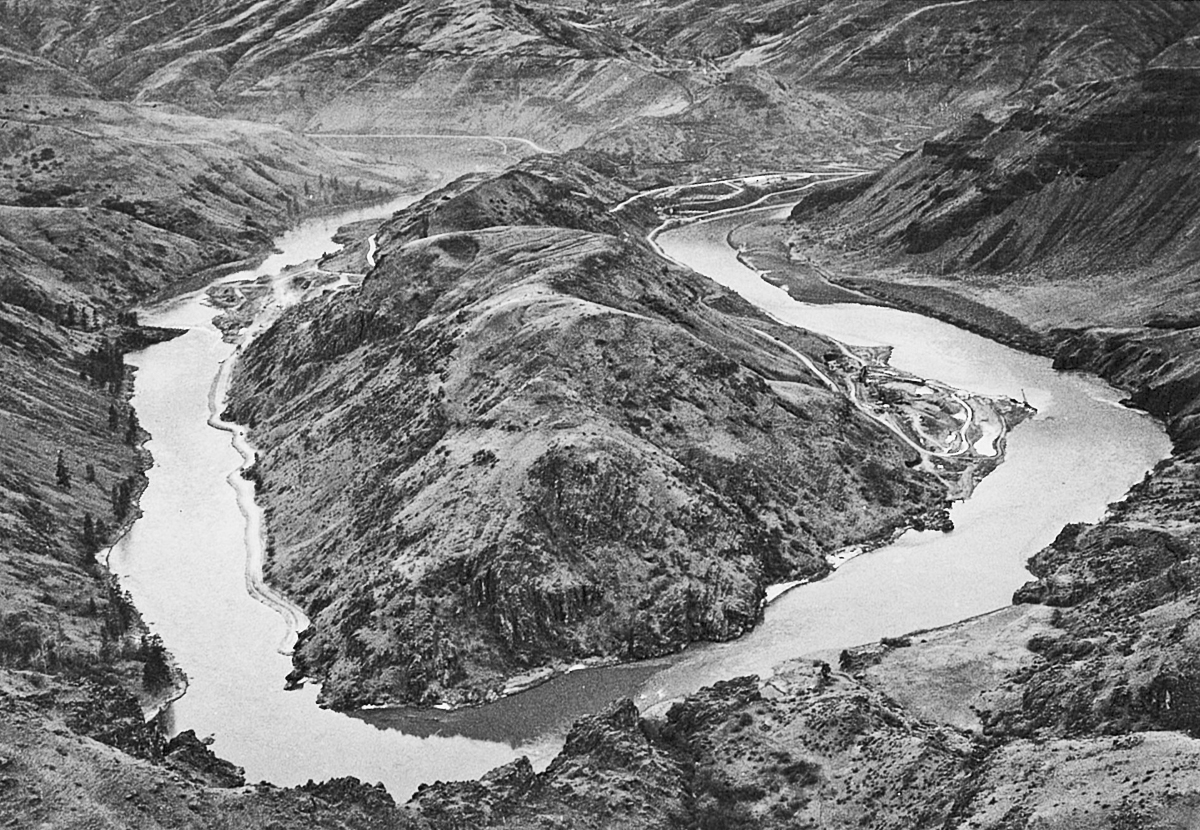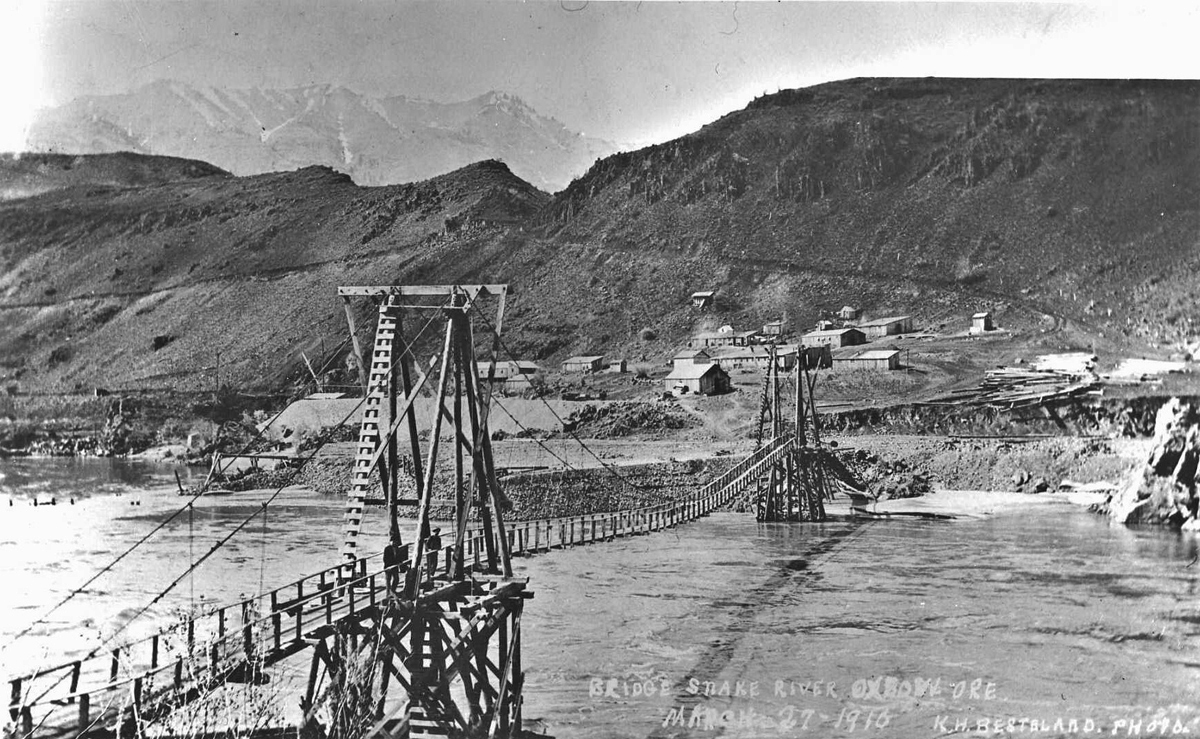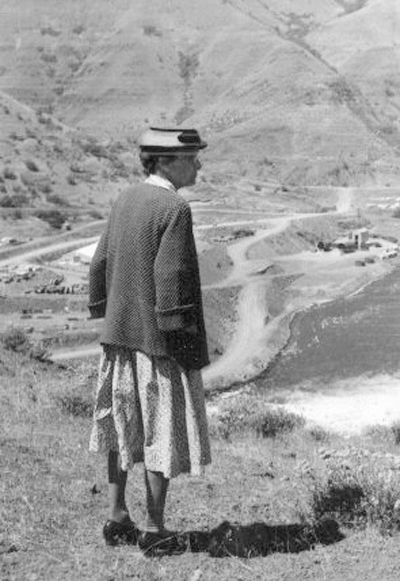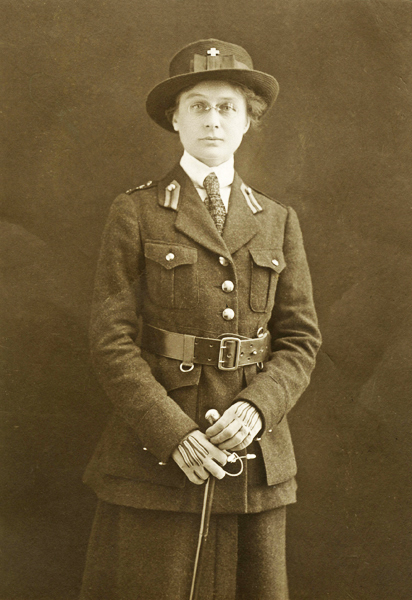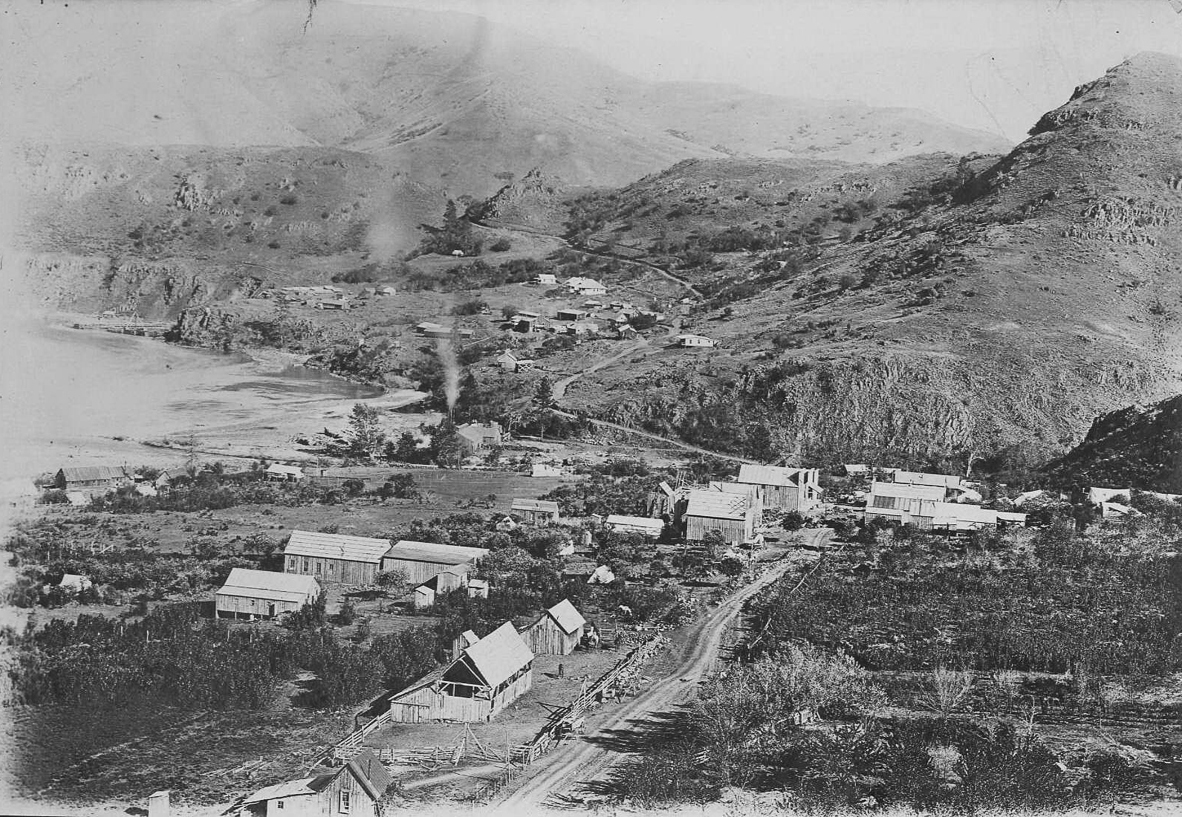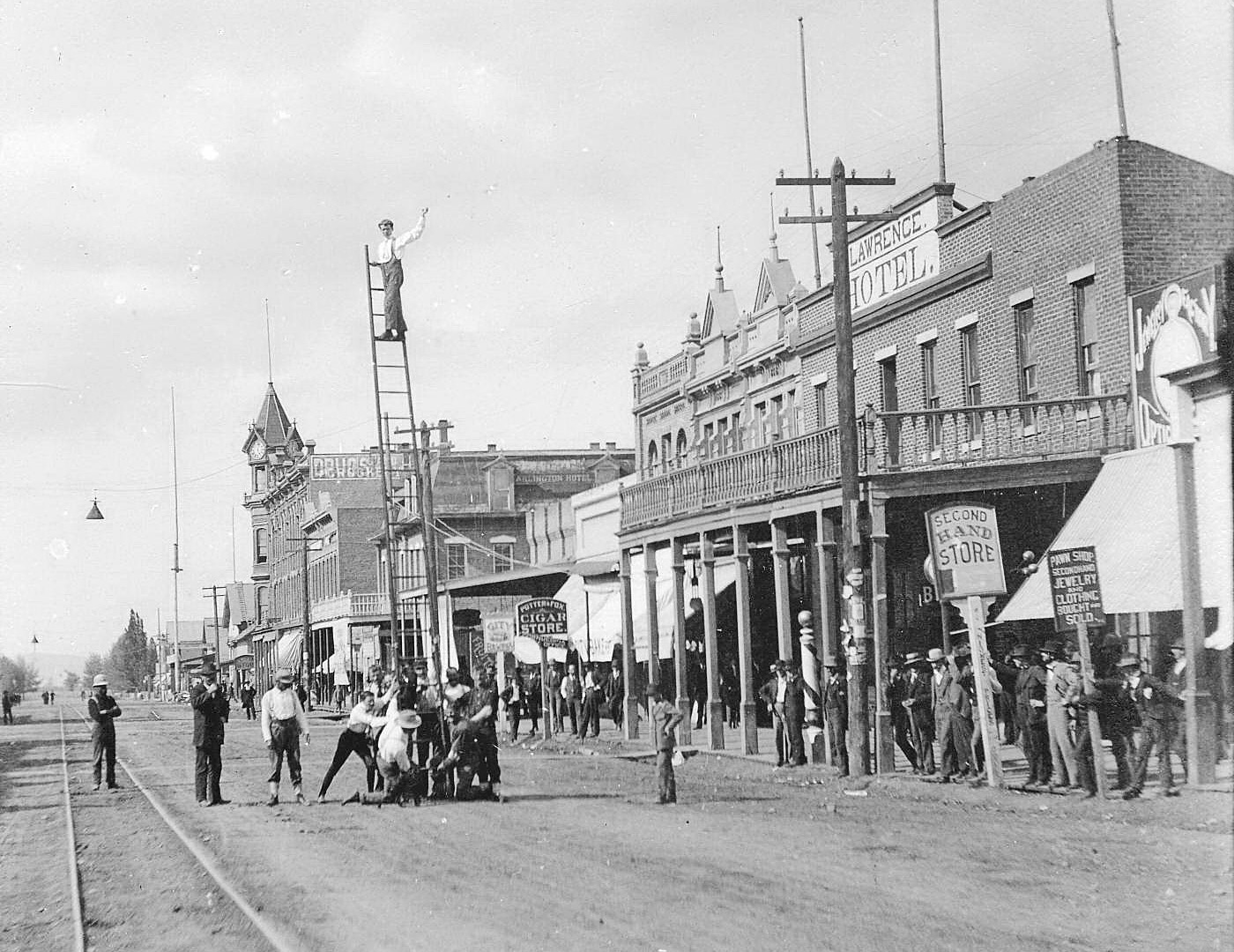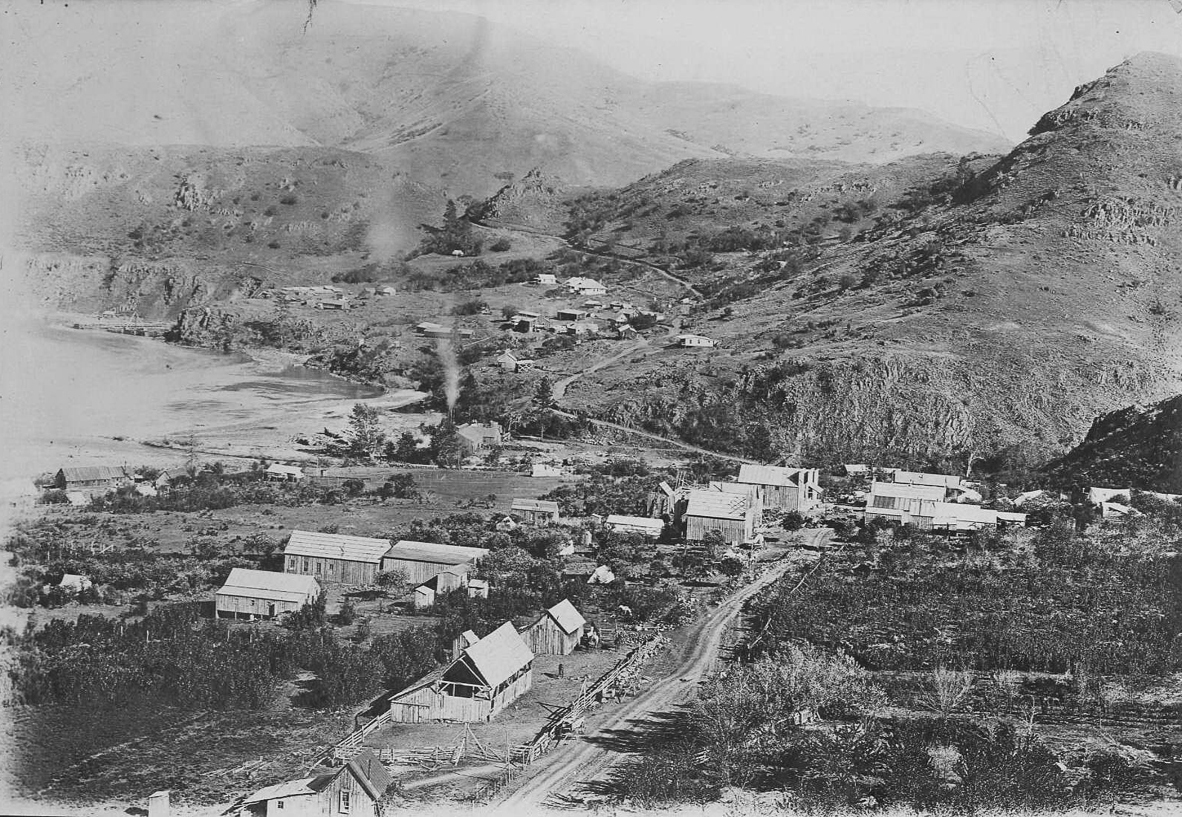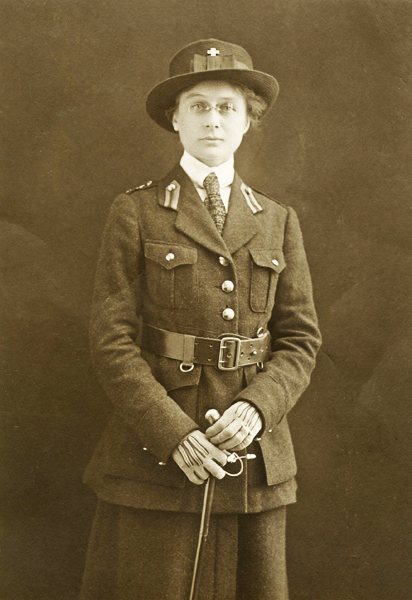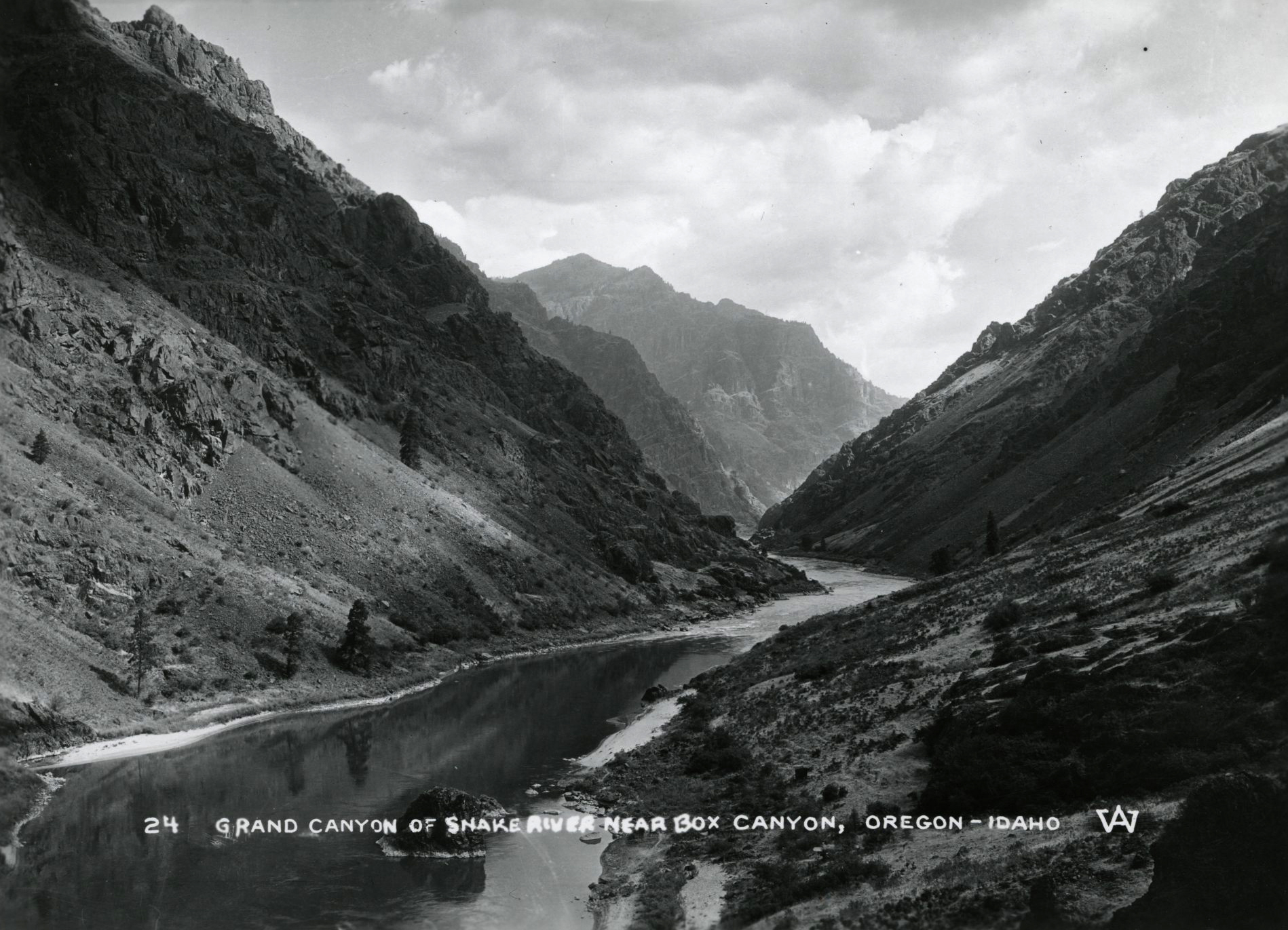The unincorporated community of Copperfield, also known as Oxbow, is located at the confluence of Pine Creek and Snake River on the eastern boundary of Baker County. The area, at an elevation of 1,700 feet, is distinguished geologically by the Oxbow Bend on the Snake River.
In 1895, prospectors made copper strikes on both sides of the Snake, a few miles north of the oxbow, but the mines could not be developed due to lack of transportation. In 1898, preliminary work was done for a spur railroad off the mainline from Huntington, fifty-eight miles north to the Iron Dyke copper mine on the Oregon side of the river. Work started up again on the railroad in 1907, including digging a 2,100-foot tunnel through the neck of the oxbow. At the same time, the predecessor of Idaho Power Company began constructing a power plant that included a dam to divert water through a separate tunnel.
In the spring of 1907, anticipating the influx of workers to the area, Baker City realtor James Harvey Graham bought the 160-acre Jake Vaughn farm and platted the town of Copperfield. He soon sold out to bankers John Schmitz and William Pollman, the mayor of Baker City. Almost overnight Copperfield’s main street was lined with businesses, including eleven saloons and as many brothels, two hotels, two boarding houses, three stores, a barbershop, and a post office. A tent city was built on the outskirts of town.
Law enforcement was lax, although the town did have a marshal and a four-cell jail, used mostly for drunks, with a dance hall on the second floor that also served as the city hall. Saloons served liquor on Sundays and ignored Oregon’s prohibition against gambling. Rival gangs of power-plant and railroad workers participated in organized mêlées, with no knives or guns allowed. Copperfield soon developed a reputation as a wide-open town.
The railroad was completed to Copperfield in late 1909. The next year, it reached its end point four miles north at Homestead, a mining camp serving the Iron Dyke Mine. Construction was also completed on the power plant that year. Copperfield’s population, at times over 1,000 people, dropped to 80 residents by 1914.
On January 2, 1914, Oregon Governor Oswald West sent his private secretary, Fern Hobbs, and five militiamen to Copperfield to put the town under martial law. The event, which received national news coverage, became known as the Copperfield Affair.
The next year, a conflagration all but wiped out what was left of Copperfield, and a fire two years later left only the schoolhouse and the post office standing. The post office closed in 1927, the railroad went out of service in 1931, and the school was annexed to Homestead in 1945.
In the late 1950s, Copperfield came back to life when Idaho Power built three high dams on the Snake River: Brownlee Dam, finished in 1959; Oxbow Dam in 1961; and Hells Canyon Dam in 1967. Idaho Power built a school building, which later became a company office and a community center. Copperfield is now the southern entrance to the Hells Canyon Recreation Area.
-
![Copperfield from the southeast, about 1908.]()
Copperfield, from SE, ca 1908.
Copperfield from the southeast, about 1908. Baker County Libr. Historic Photo Collec.
-
![Copperfield looking north, 2004.]()
Copperfield, 2004.
Copperfield looking north, 2004. Photo Gary Dielman
-
![Oswald West's campaign literature, about 1910.]()
West, Oswald, campaign literature, front.
Oswald West's campaign literature, about 1910. Oreg. Hist. Soc. Research Libr.
-
![Oxbow of Snake River before Oxbow Dam, about 1950.]()
Copperfield, aerial, ca 1950.
Oxbow of Snake River before Oxbow Dam, about 1950. Baker County Libr. Historic Photo Collec.
-
![Beginning construction of Oxbow Dam, 1957.]()
Copperfield, Idaho Power.
Beginning construction of Oxbow Dam, 1957. Courtesy Idaho Power Company
-
![Copperfield footbridge across Snake River, 1916.]()
Copperfield foot bridge, 1916.
Copperfield footbridge across Snake River, 1916. Baker County Libr. Historic Photo Collec.
-
![Fern Hobbs returns to Copperfield, 1959.]()
Hobbs, Fern in Copperfield, 1959.
Fern Hobbs returns to Copperfield, 1959. Courtesy John de Ferrari
-
![Fern Hobbs in Salvation Army in Paris, 1918-1919.]()
Hobbs, Fern, Salvation Army.
Fern Hobbs in Salvation Army in Paris, 1918-1919. Courtesy John de Ferrari
-
![Copperfield, about 1908.]()
Copperfield, ca 1908.
Copperfield, about 1908. Baker County Libr. Historic Photo Collec.
Related Entries
-
![Baker City]()
Baker City
The skyline of Baker City, at an elevation of 3,440, is dominated by tw…
-
![Copperfield Affair, 1913-1914]()
Copperfield Affair, 1913-1914
On January 2, 1914, Oregon Governor Oswald West declared martial law on…
-
![Fern Hobbs (1883-1964)]()
Fern Hobbs (1883-1964)
In January 1914, thirty-year-old Fern Hobbs achieved international cele…
-
![Snake River]()
Snake River
The Snake River has its headwaters at an elevation of 8,200 feet on the…
Related Historical Records
Map This on the Oregon History WayFinder
The Oregon History Wayfinder is an interactive map that identifies significant places, people, and events in Oregon history.
Further Reading
"Copperfield Controversy." Salem: Oregon State Archives Exhibit.
Bailey, Barbara Ruth. Main Street: Northeastern Oregon. Portland: Oregon Historical Society, 1982.
Holbrook, Stewart. "The Affair at Copperfield." In Wildmen, Wobblies and Whistle Punks. Corvallis: Oregon State University Press, 1992.

